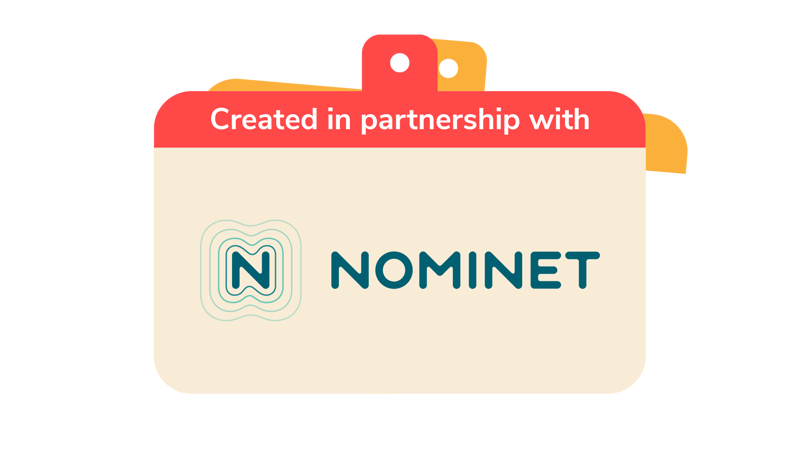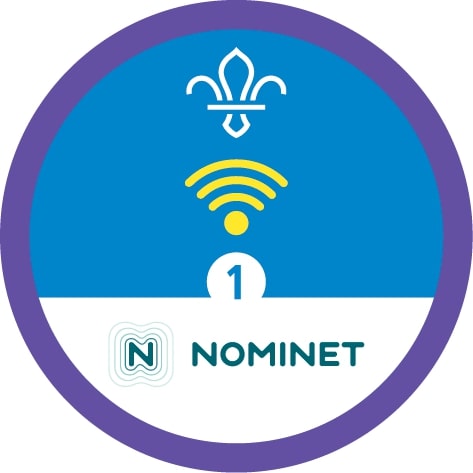
Interaction reactions
Before you begin
- This activity is all about actions and reactions and is a fun way to remind everyone that our actions can have an effect on those around us.
- Everyone should get in a seated circle, if the group is large you can create two or more circles.
Oh no!
- The person leading the activity should show everyone the Yellow Card. They should explain that it’s Scouts’ code of practice to keep everyone safe and go through what it says.
- The person leading the activity should explain that every time someone says or does something kind or unkind it can start a chain reaction online and offline. First the group will make a negative chain reaction, and then a positive one.
- The person leading the activity starts with a scenario: someone made a mean comment about my photo online. Everyone shouts, ‘oh no!’
- The next person in the circle imagines what might happen next, for example, ‘I was upset so I shouted at my mam!’ Everyone shouts, ‘oh no!’ and the game passes to the next person and so on until the chain reaction goes around the circle. Enjoy getting creative and silly but keep things light, no dying or major injuries!
- To make the game more active, once a player has said their chain reaction they have to jump up and run around the circle and sit back down in their place.
- The rest of the players keep the ‘oh’ of ‘oh no’ going as the player runs and finish with the ‘no!’ as the player sits down again.
- When the game returns to the first person, that person says, ‘and all because someone was unkind in the first place!’
- I shouted at my mam (oh no!).
- She trod on the cat’s tail (oh no!).
- The cat scratched my dad (oh no!).
- My dad screamed loudly (oh no!).
- And woke up the next door neighbour who was sleeping after a night shift (oh no!).
- The next door neighbour couldn’t get back to sleep (oh no!).
- And was grumpy at work (oh no!).
- And everyone else at their work was grumpy too (oh no!).
Hooray!
- The person leading the game should explain that we need to put things right so play the game again but this time, all the reactions should be really positive and the group can shout, ‘hooray!’ after each action.
- As with the first round, to make the game more active the player gives their chain reaction and starts to run around the circle.
- As they run, the rest of the players cheer and shout hooray until the player sits down again.
- When the game returns to the first person, that person says, ‘and all because someone was kind in the first place!’ Encourage everyone to join in.
- My friend sent me a message saying thank you for their birthday card (hooray!).
- So I smiled at my neighbour on the way to school (hooray!).
- My neighbour felt happy and bought flowers for their mum (hooray!).
- The neighbour’s mum decided to put them in her favourite vase (hooray!).
- And found a five pound note she had lost (hooray!).
- Which she gave to charity (hooray!).
Break the chain
- As a group, discuss how everyone found the game. Was it easier to think of the positive or negative reactions to the statements? Negative actions often lead to more negative reactions.
- Instead of reacting negatively, challenge everyone to come up with some ideas of how to respond positively when someone is being unkind or dishonest. This includes felling an adult if someone is making you feel uncomfortable.
- Play a final version of the game. This time start with a negative statement but challenge everyone to react in a positive way. Everyone could use some ideas from your discussion.
- As with the first round, to make the game more active the player can give their chain reaction and then run around the circle.
Reflection
This activity reminded everyone that a quick, throwaway action or word can have ripple effect on others that we may not even see. Ask the group if they’ve ever thrown a stone into water and seen the ripples. The person leading the activity could even demonstrate by dropping a pebble into a bucket or bowl of water and encouraging everyone to watch how the ripples fan outwards. Our actions and words create that ripple effect and we can choose if that’s good (hooray!) or not so good (oh no!). Talk about what this means for how we behave offline and online and how we have a responsibility with our words and actions to try and create hooray moments rather than oh no moments.
At Scouts we have our Yellow Card so that everyone knows how to keep each other safe, and how to respond if people are making you feel uncomfortable in person, or online. The person leading the activity should remind everyone that they should tell a trusted adult if they feel uncomfortable about anything online. Ask everyone to think for a moment or two of which trusted adult they could talk to.
Safety
All activities must be safely managed. You must complete a thorough risk assessment and take appropriate steps to reduce risk. Use the safety checklist to help you plan and risk assess your activity. Always get approval for the activity, and have suitable supervision and an InTouch process.
- Active games
The game area should be free of hazards. Explain the rules of the game clearly and have a clear way to communicate that the game must stop when needed. Take a look at our guidance on running active games safely.
Start the game off with small groups of four or five so players don’t run out of ideas too quickly. Invite some helpers to support each small group.
Small groups can act out some of the scenarios and chain reactions from the game. When the person leading the activity calls out ‘freeze!’ the group must freeze in position. Enjoy looking at the shapes they’re making! Call out ‘unfreeze’ and let the action carry on for a few seconds.
Everyone can work together to provide players with suggestions and examples for ideas. The game should be a proper team effort and can be played with or without the running element.
All Scout activities should be inclusive and accessible.
